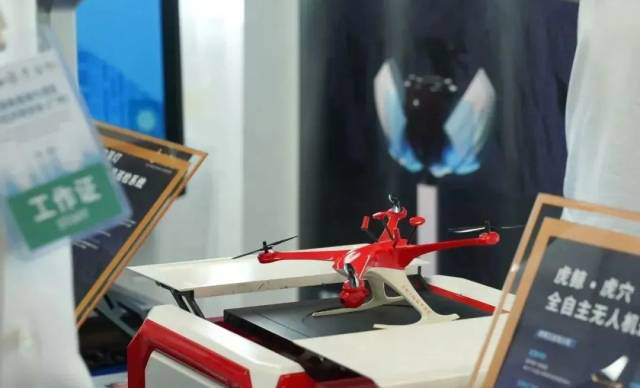Guangzhou's Nansha District has announced plans to deploy 36 sets of automated drone hangars across the region, forming a drone network that offers round-the-clock, comprehensive, low-cost, and high-frequency data collection and urban monitoring capabilities.
Each hangar, with an average service radius of approximately 7 kilometers, will enable swift access to any designated area within the district's boundaries. These cutting-edge drone hangars empower drones with unmanned operation, remote control, automatic battery charging and replacement, autonomous patrols, and real-time data and clue transmission, significantly enhancing the flexibility and timeliness of urban monitoring while reducing costs.

Photo: Nanfang Daily
The drones' inspection efficiency surpasses traditional manual inspection modes by over two times, leveraging aerial photography's advantages of large coverage, high precision, minimal blind spots, and high efficiency. From issue detection to flight photography, followed by clue extraction and feedback to relevant departments for action, the entire process can be completed in as little as 20 minutes.
Moreover, the technical team has independently developed a flight control management system, which integrates drone flight control, operation management, data management, and intelligent recognition algorithms. With a single command, drones can autonomously perform missions and transmit data back.
As the city's first pilot region for government-coordinated integrated drone services, Nansha achieves centralized and efficient management of drone services. These services span over 20 application scenarios, including waterway patrols, urban management, chemical industry inspections, disaster warning and emergency response, and key project supervision.

Photo: Luo Zhongxian
"A tornado disaster has been reported in an area of Lanhe Town. Please dispatch drones to capture images of the disaster site." In a recent instance, upon receiving a tornado disaster warning for a location in Lanhe Town from the district's meteorological bureau, the technical team swiftly organized a flight support team to design flight routes and dispatch multiple drones through the flight control system.
Within 30 minutes, the drones completed on-site photography and transmitted disaster clues, assisting the meteorological department in accurately assessing the tornado's path and damage, thereby gaining valuable time for emergency response planning.
Furthermore, Nansha is exploring and developing through remote sensing interpretation, change detection, and AI computing power, gradually accumulating massive multi-source data samples. This has led to the establishment of an AI algorithm library for identifying illegal constructions and land use, detecting urban clutter, recognizing river pollution, monitoring road congestion, and forest fire surveillance, significantly improving the accuracy and speed of automated recognition.
Reporter | Abby
Editor | Nan, James
















